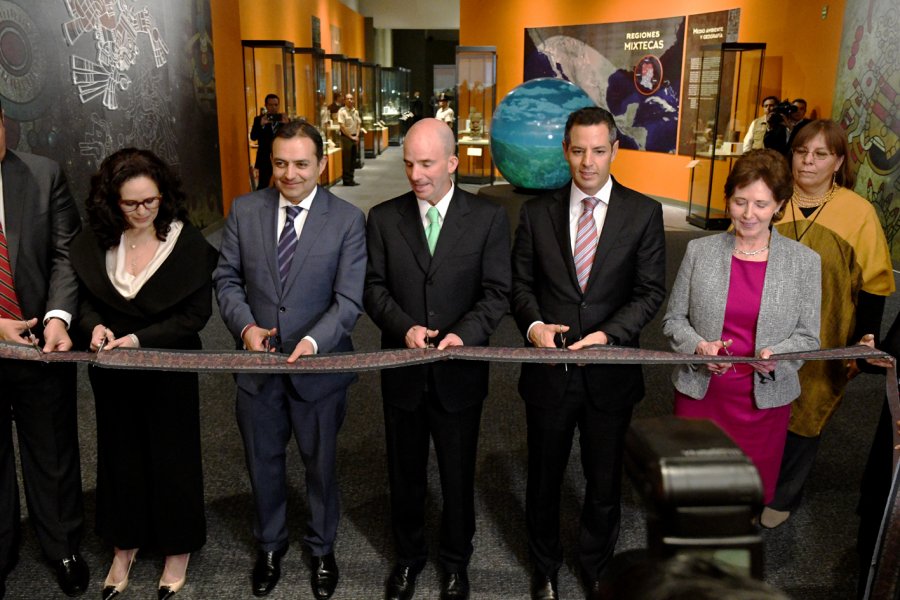Noticias
Opening of the exhibition Mixtecs Ñuu Dzahui. Lords of the rain at the National Palace
January 12, 2018The Mixtec culture, one of the longest-lived in Mexico, whose cosmogony is related to the sacred rites of water, is the object of a deep approach through the great exhibition Mixtecos Ñuu Dzahui. Lords of the rain, organized by the Department of Finance and Public Credit (SHCP, for its acronym in Spanish), in collaboration with the Department of Culture, through the National Institute of Anthropology and History, which was opened on Thursday January 11 in the Gallery of the National Palace.
The opening ceremony was headed by Treasury Secretary José Antonio González Anaya, María Cristina García Cepeda, Secretary of Culture; and Alejandro Murat, constitutional governor of Oaxaca.
Treasury Secretary said that this exhibition will offer an approach to the knowledge of Mixtec culture from a new perspective that links archaeological richness with the development of its traditions over the centuries.
Secretary of Culture, María Cristina García Cepeda, said that the opening of this tour through one of our country's emblematic cultures in a space such as the gallery of the National Palace, endorses the important dialogue that Mexicans have with their culture.
Governor Alejandro Murat, said that this exhibition is presented at a time of great challenges for the Oaxacan people and therefore the variety of pieces that make it up recalls the richness of its history and the greatness of a culture unique in the world.
Meanwhile, Lilia Rivero Weber, general director of Conservation of the National Palace, explained that this exhibition presents in more than two thousand meters, not only an archaeological tour, but an exhibition of the great resistance of the Mixtec people over the decades to preserve their traditions and culture.
“Having this exhibition in such an emblematic building as the National Palace is undoubtedly a reminder that this culture is alive and still enriching all Mexicans”, he added.
During the opening tour, the public could see pieces such as the golden and turquoise pectoral found in Yanhuitlán, Oaxaca; the Estela Ñuiñe Stone, used as a calendar; the black Tecomate with snake decoration, and funerary urns of different sizes.
Also presenting the Effigy Vessel with the representation of the Old God, belonging to the epiclassic 650-1000 A.D., as well as the Xantiles, anthropomorphic figures belonging to the postclassic.
The exhibition of the map of San Vicente del Palmar, made in parchment and carmine cochineal more than 450 years ago, deserves a special mention. The cacicazgos of the Mixtec region are described on it and it’s accompanied by codices from communities such as Tequixtepec and Teposcolula.
Other interesting pieces are the stone representation of the deity Chalchihuitlicue, which protects the springs, as well as the figure of open hands that alludes to an assistant of Dzahui, God of the rain.
In another section you can find objects and tools of the daily life of this culture showing how in the post-classical era the Mixtec region was divided into large and small lordships called Yuhuitayu, who participated in political and commercial life.
Photographs and illustrations also show the geographical richness of this culture, which is divided into three regions: the upper and lower Mixtec region and the coastal area. It is also worth mentioning the references to Mixtec lordships such as Yodzocahi, Yutatnoho, Ñundiyo, Yucudzaa, Yuvusatuta, Tocuisi and Yutandayu.
Mixtecos Ñuu Dzahui. Lords of the rain, it is exhibited in the gallery of the National Palace, from Tuesday to Sunday, from 10:00 to 17:00 hours, until the end of June. Free entry.
Mexico,Distrito Federal
